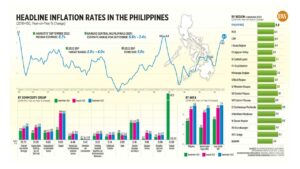SEC strengthens rules on removal, disqualification from firms

By Keren Concepcion G. Valmonte, Reporter
THE Securities and Exchange Commission (SEC) is strengthening its rules on the disqualification and removal of the directors, trustees, and officers of companies “in line with its commitment to ensure good corporate governance in the country.”
SEC Memorandum Circular No. 4, Series of 2022 was issued on Feb. 15 and published online on March 2.
“The memorandum circular covers pleadings, practices and procedures before the SEC in all matters of hearing and proceedings for independent administrative actions for the removal of directors; removal of directors, trustees, and officers as a sanction in the Commission’s proceedings; and imposition of sanctions on the board of directors or trustees who, with knowledge of disqualification, failed to remove a disqualified director or trustee,” the SEC said in a statement on Thursday.
The said memorandum operationalizes Sections 26 and 27 of the Revised Corporation Code of the Philippines (RCC) or Republic Act No. 11322.
Section 26 provides grounds for an executive’s disqualification, while Section 27 allows the commission to order the removal of a director or trustee elected, despite the disqualification, upon verified complaint and after due notice and hearing.
“Under the rules, disqualification refers to the fact or condition that disqualifies a person from being a director, trustee, or officer, while removal pertains to the act of taking away a person from such position,” the SEC said.
The disqualification guidelines apply if the director, trustee, or officer commits violations stated within five years before their election or appointment or during their tenure as a company executive.
A person may be disqualified if they have been convicted by final judgment of an offense punishable by being imprisoned for over six years or for violating or having an offense involving fraudulent acts punishable by the RCC or the Securities Regulation Code on top of other rules implemented by the SEC.
An individual may also be disqualified if they were found administratively liable by a foreign court or an equivalent foreign regulator for misconduct related to the ones stated under the RCC.
The director, trustee, or officer may also be disqualified if they were found administratively liable by final judgment by not allowing the inspection and/or reproduction of corporate records.
“An independent administrative action for the removal of a director, trustee, and/or officer of a corporation may be commenced upon the motu proprio issuance of a formal charge by the SEC operating department that has jurisdiction over the subject matter, or upon filing of a verified complaint with the operating department,” the SEC said.
The SEC operating department concerned may dismiss the complaint if it was filed without complying with requirements or if the commission or the operating department has no jurisdiction over the subject matter.
The regulator may also dismiss the complaint if there is already a pending action or if a complaint was filed beforehand regarding the same matter or issues in any court, tribunal, or agency. It may also be dismissed if there is insufficient evidence to support the complaint’s allegations.
“On the other hand, a summons will be issued to the respondent/s should authority to act over the complaint be established by the SEC. The respondent/s will be given 15 days from receipt of the formal charge or summons to file a verified answer,” the SEC said.
If the respondent does not issue an answer, the commission may go forward with a judgment on the complaint. The SEC may also schedule a clarificatory hearing.
The procedures on the decisions, resolutions, final orders, appeals and motions for reconsideration will be done according to the 2016 SEC Rules of Procedure.
Meanwhile, the SEC may remove a director, trustee, and/or officer of a corporation if it establishes grounds that the individual may be disqualified from his/her post following an administrative or adjudicative proceeding.
“The SEC will first issue an order directing the director, trustee, and/or officer of the corporation to show cause why they should not be disqualified from their position or be administratively penalized,” the commission said.
Similar to the procedures on disqualification, the respondent will be given the opportunity to file a response within 15 days from notification. The SEC may go ahead motu proprio with a judgment to impose sanction/s “as the evidence presented or established in the course of the proceedings may warrant.”
If a one-person corporation’s sole director is removed, the SEC said the nominee will take the place of the single stockholder as director and the nominee will also be put in charge of the corporation’s affairs.
The regulator may also opt to issue a permanent cease-and-desist order and/or slap a monetary penalty of P10,000 to P400,000 for every violation of its orders or any relevant laws and regulations.
The commission will also record all orders, decisions, or resolutions involving the removal of a director, trustee, and/or officer of a corporation via a Removed Directors, Trustees, and Officers Index. Its access is limited to the SEC unless they receive authorization from the concerned individual and approval from the SEC operating department’s director.




